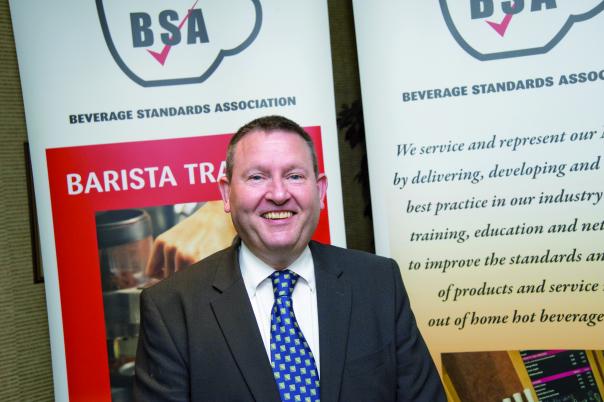
I start by declaring an interest: I am proud to be chairman and executive director of the Beverage Standards Association (BSA) and from July of this year, I move into my second year of running and developing the association for its members.
In the UK, there are around 1,600 trade associations. Some are small and provide support in a locality or a county, others are much bigger, with a membership that stretches across the breadth of the UK.
This article is a call to arms to those companies that are not members of an association that represents them at local & Government level; and to those companies that have recently joined an association – do ensure you or your employees attend meetings, visit the association website and definitely sign up for the regular email updates, which are a good source of industry information and should be used to benefit your company and your customers.
Associations were born out of the need for a body of like-minded people, who believed that their sector was not meeting the demands of an ever-changing marketplace. Also, given a continually changing legislative structure, an association can ensure that body’s voice is heard in the corridors of power.
At this point I am going to put down a marker: an association is not and never should be, or become, a buying group. An association that becomes a buying group loses touch with its real focus, which is to deliver, develop and endorse best practice in the industry it represents, through training, education and networking; and to improve the standards and quality of products and services in the area it works in. A professionally run buying group provides the benefits of economy of scale.
So, what should an association be offering its members?
1. Networking opportunities
An industry is a network of people, each with specialist knowledge and expertise, often built up over decades. Through events such as conferences, regional meetings and training courses, your association should give access to that expertise and experience.
2. The opportunity to promote members and their business
Depending on your type of business, this could either be directly or indirectly. It could provide the opportunity to find a new supplier or to form strategic alliances that add value to your business; or it could simply be a chance to raise your profile as you embark on a career in the beverage industry.
3. Training
This could be through a nationally recognised course such as City & Guilds VRQ or courses created for a range of members who have particular needs or challenges.
4. Website
As a member, you can help make the association website useful, practical and relevant to the industry it represents by sending regular email updates containing news items that could be added to the site. Industry comment is also useful and where there is an opportunity to participate in debate on the association site, your views could be helpful to other members.
5. Regional meetings
Regional meetings are about recognising the challenges and opportunities that are closer to home for its members. For example, the challenges in London are different to the ones faced by members in York. Regional meetings create local networking opportunities and allow local committees to form to tackle local challenges.
6. Free technical helpline
With improved quality of information from suppliers and the answers to most questions available on the web, a technical helpline may seem outdated. However, there will be occasions when a phone call to a friendly expert is worth every penny – and more – of the membership fee.
7. Complimentary magazines
Even in today’s electronic age, it is still a pleasure to read a quality magazine, which brings the sizzle to your desk. It is in members’ interest supply regular information to help keep magazines lively and up to date.
The majority of associations offer an impressive breadth and depth of knowledge, information and assistance, so why do companies not join? And when they do join, why do they take little or no active part during their membership until the next year’s fee invoice arrives, when a small minority asks, “What has my association done for me?”
Some of this is caused by the inertia of the association but most of it comes from members. How do associations solve this? Do we have to work harder? What can member companies do?
They should make a solid commitment from the top of their business by encouraging staff to attend regional meetings; by supplying information for inclusion in the association’s website, where practicable; by offering to help on committees for one-off projects (spread the work and ease the workload). Even if your first offer of help is not needed, don’t give up – offer again in a few months. An association is ever changing and the demands are continuous.
Remember, we only realise what a good thing we have when it has gone and trade associations fall into that category. Support them or lose them.